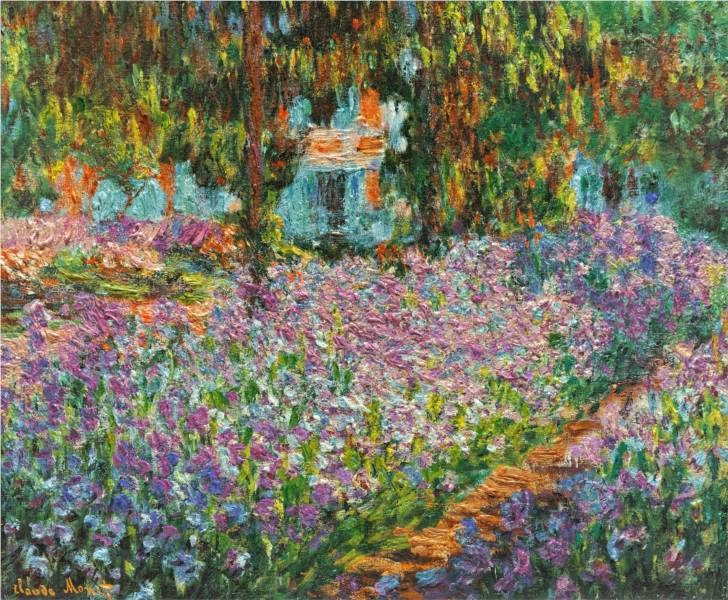by Ram
 |
| Irises in Monet’s Garden by Claude Monet |
In the Sadhana Pada of the Yoga Sutras by Patanjali we are introduced to the concept of Ashtanga Yoga (Ashta=eight; Anga=limbs), which refers to the eight-fold path/eight rungs/limbs/steps of yoga as described in the Raja Yoga section of the yoga philosophy. Its practice helps us to discriminate between ignorance and awareness and truth from illusion, which is the means for liberation or enlightenment. The first three limbs namely Yama, Niyama, and Asana, which I discussed in earlier posts help to prepare the body and mind for regulating the breath and achieving stillness.
The fourth limb in the Ashtanga series is Pranayama: Prana =life force, breath, wind, air, respiration, vital energy, and ayama = extend, stretch, draw out, regulate. Pranayama, a formal practice of regulating the breath, consists of techniques designed to gain mastery over the respiratory process while building a connection between the breath, the mind, and the intellect. The technique refers to a particular system of breath control involving three processes namely: puraka (inhalation), kumbhaka (retention), and rechaka (exhalation). When these three processes are balanced, there is union of the body and mind.
According to the Yoga Sutras, the practices of pranayama and asana are considered to be the highest form of purification and self-discipline for the mind and the body, respectively. Pranayama serves as the gateway to meditation and higher yogic practices, and the practice produces the actual physical sensation of heat, called tapas, or the inner fire of purification. It is believed that this heat is part of the process of purifying the nadis, the subtle nerve channels of the body. This allows a more healthful state to be experienced and allows the mind to become calm. As the yogi follows the proper rhythmic patterns of slow deep breathing, the patterns strengthen the respiratory system, soothe the nervous system, and reduce craving. As desires and cravings diminish, the mind is set free and becomes a fit vehicle for concentration. Thus, any individual who has a regular practice of pranayama is able remove the impurities of the body, the senses, and the mind through the power of breath regulation.
Pranayama not only pacifies and revitalizes a tired body, but it also calms, rejuvenates, and uplifts the mind, leading the individual into deeper state of meditation. There are several different forms of pranayama, however, several teachers caution that pranayama practice needs to be restricted only to experienced practitioners. There is some wisdom in being vigilant about the practice, for if done incorrectly it can lead to problems in the nervous system and psychological disturbances. But there are a few basic pranayama practices that are safe for nearly everyone, and we have discussed a few of them on our blog (see Pranayama for Everyone: Bhramari Breath and Balancing Your Nervous System with Your Breath). You can practice pranayama as an isolated standalone technique or integrate it into your daily yoga asana routine.
Thus, the first three limbs together with pranayama practice refine our personalities, helping us gain mastery over the body and develop an energetic awareness of ourselves, all of which help us to control our senses and our mind, and attain a higher state of consciousness. Several researchers have now reported that pranayama techniques are beneficial in treating a range of disorders, including:
- improving cardio-pulmonary functions
- increasing autonomic functions
- balancing the blood pressure
- relieving symptoms of asthma
- reducing physical and mental stress
Additionally, pranayama practitioners report that this breathing practice helps in developing a steady mind, strong willpower, and sound judgment.
I consider pranayama as a “green therapy” because no harm is done to the environment, trees, or animals around us. All it requires is a place to be seated and your willpower, focus and concentration. While the requirements for this practice are minimal, the benefits are immense!
Follow Yoga for Healthy Aging on Facebook ° To order Yoga for Healthy Aging: A Guide to Lifelong Well-Being, go to Amazon, Shambhala, Indie Bound or your local bookstore.


great post! Could you point me in the direction of the researchers that have done studies with pranayama and physiological disorders? I'm very interested in this, thank you!
Thank you Ram.